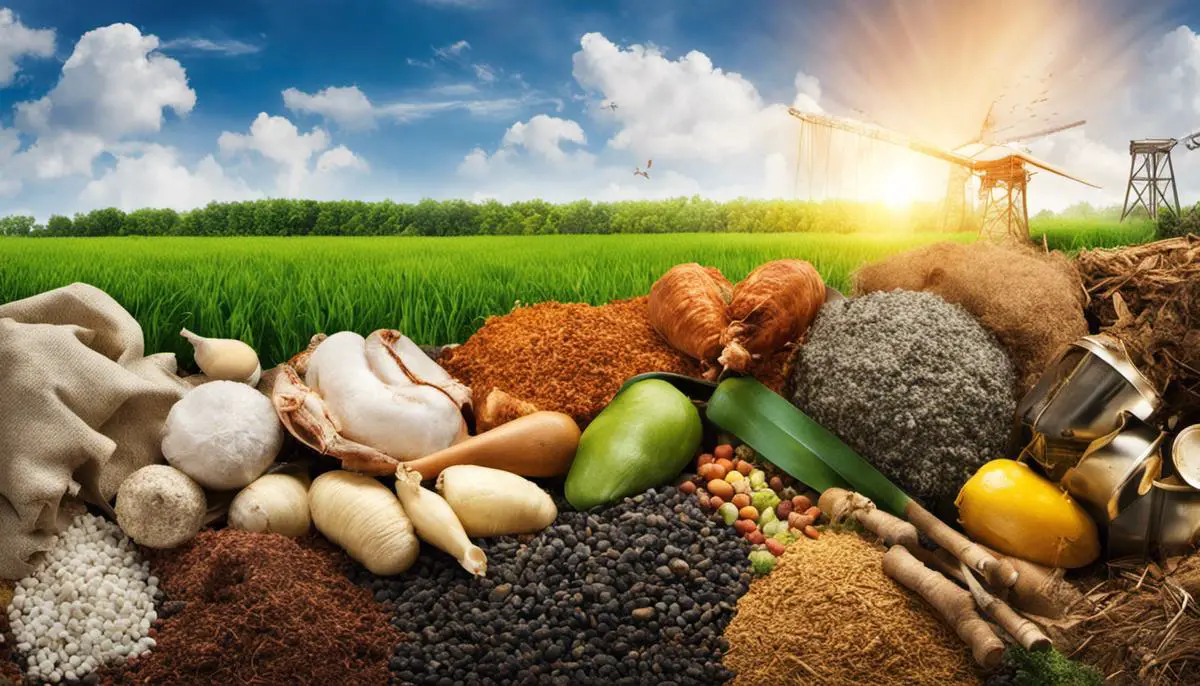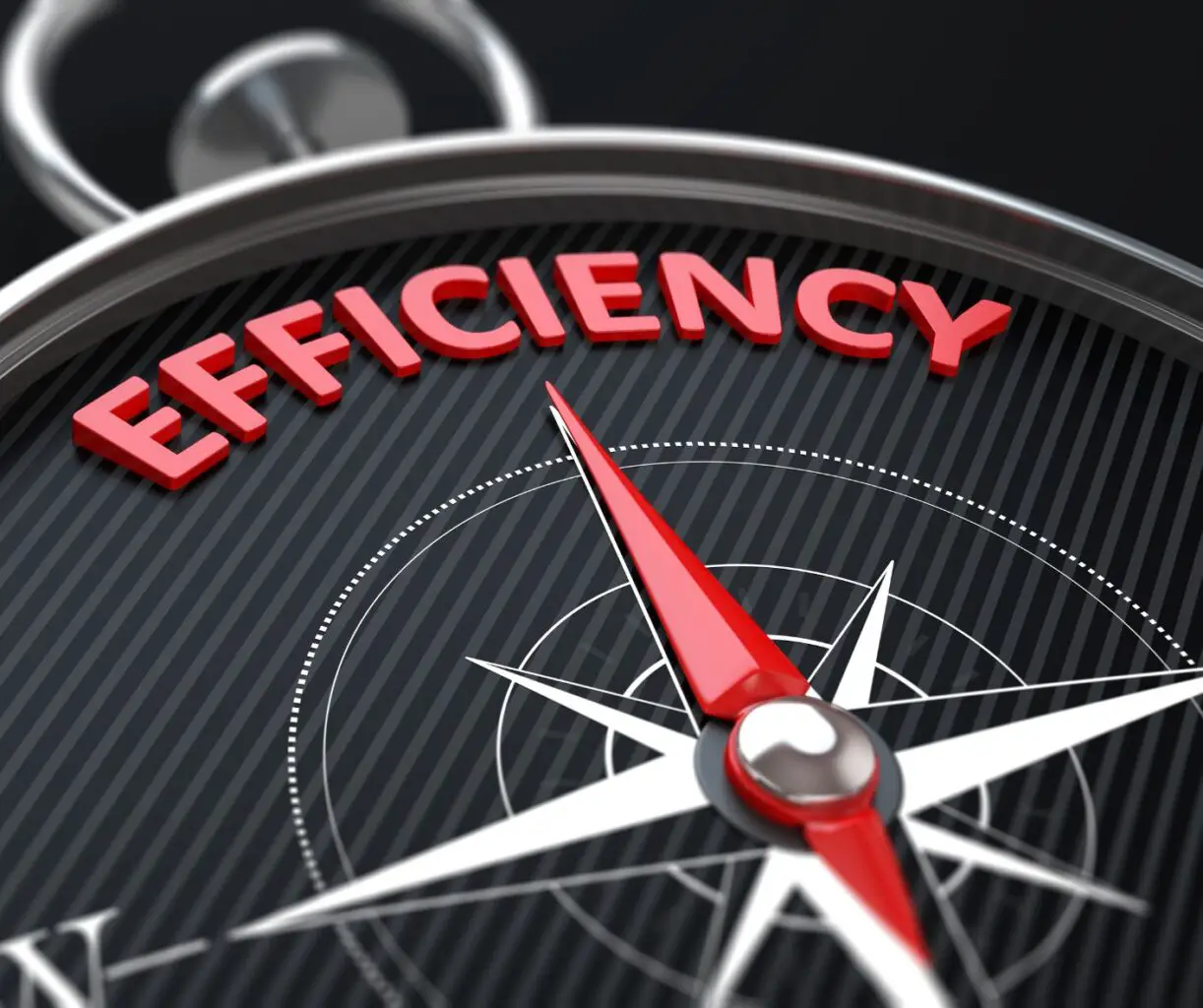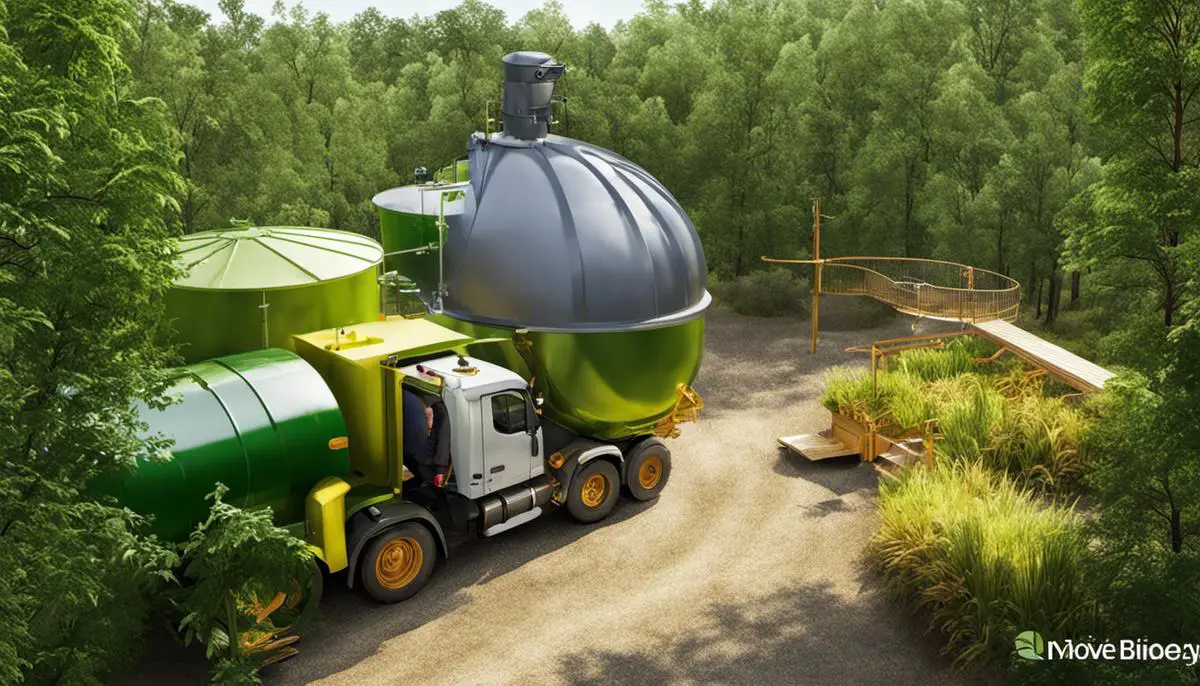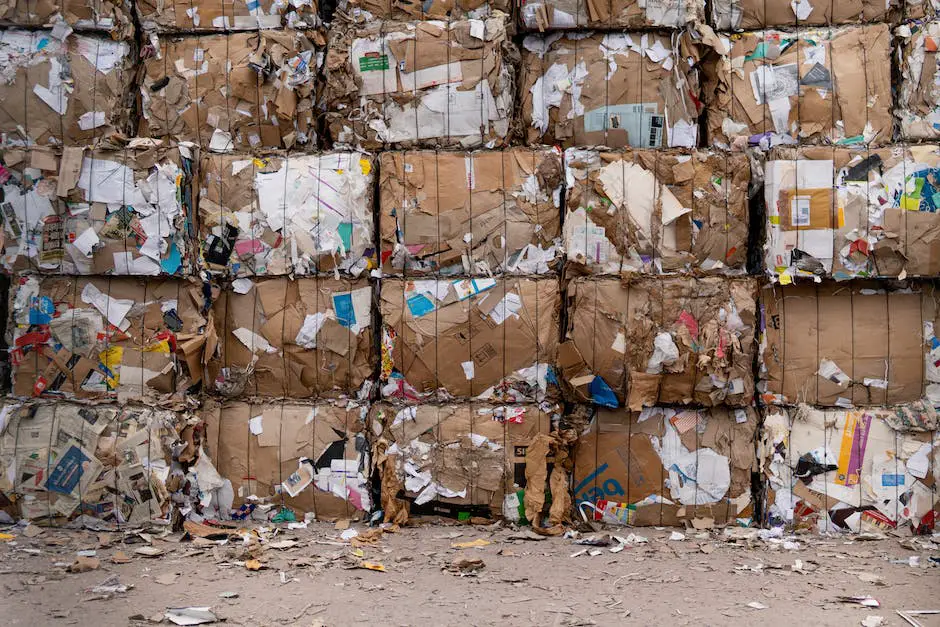The impending environmental crisis that engulfs our planet has sparked a critical evaluation of the ways we generate and use energy. Bioenergy, energized by organic materials, offers a promising alternative to fossil fuels as a potent, renewable, and cleaner-burning energy source. Flowing through the veins of industries and fields worldwide, various forms of bioenergy such as biomass, biofuel, and biogas inch us a step closer to a sustainable future. However, the waste generated in the process of harnessing this energy poses a significant challenge to environmental and human well-being, necessitating an efficient and safe approach to its disposal. This discourse examines the depths of this dilemma, striding from the crux of bioenergy and waste generation to cutting-edge waste disposal methods and future prospects.
Understanding Bioenergy
Understanding Bioenergy and its Types
Bioenergy is a form of renewable energy generated from biological sources or organic materials. This broad term encompasses several specific types, including biomass, biofuel, and biogas.
Biomass is organic matter derived from living or recently living plants and animals, including wood, waste, gas, and alcohol fuels. Biofuel, on the other hand, specifically refers to fuels that are produced by plants. These include biodiesel, bio-alcohol (ethanol, butanol), and other types of bio-oils and bio-syngas. Biogas, the third category, involves the generation of combustible gases from the anaerobic decomposition of organic matter by bacteria.
These sources of bioenergy are utilized in multiple fields and industries. They are primarily employed in energy production, but also in the manufacturing industry and agriculture. Biomass, for instance, is a key source of energy for heating and electricity generation, while biofuels are primarily used in the transportation sector.
Benefits and Implications of Bioenergy Use
Using bioenergy as a source of power offers a wide range of potential benefits. It allows for a decrease in our dependency on fossil fuels, and can help reduce greenhouse gas emissions. This is because the combustion of biomass, biofuels, or biogas only releases carbon dioxide that was absorbed by the plants during photosynthesis, effectively making it a carbon-neutral process.
However, the use of bioenergy also has several implications. These include the risk of deforestation, land degradation, and water pollution associated with the farming required for biomass production, and the production and usage of biofuels. There are also socio-economic implications, as the land used for biomass cultivation could be used for food production instead.
Efficient Bioenergy Waste Disposal
Efficient bioenergy waste disposal is a critical aspect of the bioenergy lifecycle. For instance, the waste byproduct from biomass energy conversion processes can be processed and used as organic fertilizer in farming, thus closing the loop of sustainability.
The waste from biofuel production, often known as ‘biofuel waste,’ is also rich in nutrients and can be used in a similar way. This could involve transforming biofuel waste into a beneficial soil amendment, offsetting the need for artificial fertilizers and further reducing the environmental impact of bioenergy production.
Biogas waste, often in the form of digestate, is another opportunity for efficient waste disposal. Digestate can be used as a fertilizer and soil conditioner due to its high levels of nutrients, improving soil health and boosting crop yields.
Innovative technologies are also been utilized for efficient waste disposal in bioenergy production. For example, some bioenergy plants are applying advanced thermal technologies, such as pyrolysis and gasification, to convert waste material into usable heat, electricity, or fuel.
Introduction to Bioenergy Waste Disposal
Proper disposal of waste from bioenergy production is not solely about proper waste management; it can also deliver additional benefits. One of which includes the production of valuable byproducts like fertilizers, thus increasing the sustainability and economic viability of a bioenergy system.

Waste generation in Bioenergy
Grasping the Concept of Bioenergy Waste
Bioenergy waste, produced as an unavoidable byproduct during energy generation from organic materials or biomass, can originate from varied sources. These include plant matter, animal waste, remains from agricultural ventures, and even municipal solid waste. The type of biomass utilised and the methods of energy extraction determine these different bioenergy waste types.
The most prevalent forms of bioenergy waste range from carbon dioxide, solid waste such as ash and unburnt materials, water residues, to specific types such as bagasse from sugarcane, draff from whisky distilleries, and poultry litter from animal farming. It’s essential to realise that these waste products significantly vary depending on the raw materials and processes implemented.
Volume of Bioenergy Waste
The volume of waste produced in bioenergy processes can be substantial. For example, in the production of bioethanol from corn, only about 30% of the corn biomass is converted into ethanol, while the rest is released as waste that requires disposal. Similarly, the anaerobic digestion of manure to produce biogas results in a large quantity of residual digestate. Each type of bioenergy production has a unique equation of input and waste production which impact the overall efficiency and environmental footprint of the specific bioenergy resource.
Handling and Storage of Bioenergy Waste
The handling and storage of bioenergy waste require careful consideration to minimize environmental and health impacts. Notably, some bioenergy waste can be composted and used as a nutrient-rich soil improver, thereby turning the waste into a useful byproduct. As for carbon dioxide and other greenhouse gases, careful regulation and controls are needed to ensure emissions remain within acceptable limits to prevent environmental harm.
Liquid waste such as residues from biofuel fermentation processes should be properly stored and treated before disposal to prevent pollution of water bodies. Solid waste, including ash, needs safe storage solutions to prevent it from being blown around by wind and potentially affecting air quality. Some of this solid waste can also be repurposed into construction materials or used in land reclamation projects.
Potential Environmental and Health Impacts
Improper management of bioenergy waste can lead to numerous environmental and health impacts. Greenhouse gas emissions from bioenergy waste, for instance, contribute to climate change. Untreated liquid waste can pollute water bodies impacting plant and animal habitat, besides posing risks to human health. Similarly, airborne particles from mismanaged solid waste can affect air quality and contribute to respiratory disorders among humans and animals.
Inefficient bioenergy waste disposal can also lead to the loss of potentially beneficial resources. Waste from the bioenergy process, when properly managed, can be a valuable resource. For example, organic wastes can be composted to improve soil fertility, and methane emissions from waste decomposition can be captured and used as biogas for heating or electricity production.
Efficient Bioenergy Waste Disposal: A Growing Necessity
As we increasingly lean on bioenergy for our energy needs, the demand for innovative, sustainable, and eco-friendly bioenergy waste disposal strategies also rises. This involves exploring potential options such as composting, recycling, proper storage, and converting waste into usable byproducts. The overarching aim is to build a sustainable waste-to-resource framework that mitigates the environmental and health repercussions of bioenergy production and consumption.
In addition to these practices, the bioenergy sector requires robust regulations to guide, monitor, and regulate its waste disposal. With the right policies and advancements in technology, we can make the dream of efficient bioenergy waste disposal a reality.

Current waste disposal methods
Current Advanced Methods for Effective Bioenergy Waste Disposal
Disposing bioenergy waste entails transforming waste biomass, such as forestry waste, agricultural residues, animal manures, and municipal waste, into biofuel, biogas, or electricity. We currently have several advanced techniques that are effectively employed for this purpose. These methodologies include aerobic digestion, incineration, and anaerobic digestion.
Aerobic Digestion
One of the primary methods used for bioenergy waste disposal is aerobic digestion. This process utilizes microorganisms in the presence of oxygen to break down biomass and turn it into compost. The compost can then be used to improve soil health, while the heat generated from the process can be used for energy production. A positive aspect of this method is that it eliminates the need to send waste to landfills, thereby reducing the release of harmful greenhouse gases. However, the main disadvantage is that it requires considerable use of energy for the aeration process.
Anaerobic Digestion
For waste with high moisture content such as food scraps and animal manure, anaerobic digestion is often employed. This process breaks down organic matter in the absence of oxygen by anaerobic microorganisms, producing a methane-rich biogas and a nutrient-rich digestate called biofertilizer. The biogas produced can be used to generate heat and electricity, while the biofertilizer can be used as a soil amendment in agriculture. The anaerobic digestion process helps to significantly reduce the volume of waste while generating renewable energy. However, the process can release powerful greenhouse gases if not properly managed and monitored.
Incineration
Waste incineration is another method utilized in bioenergy production. It involves the combustion of organic substances contained in waste materials to convert them into heat, gas, steam, and ash. The heat and steam produced can be used to drive electrical turbines, thereby generating electricity. One of the main advantages of incineration includes its ability to reduce the volume of waste by about 90%, thereby saving landfill space. However, it can lead to the emission of harmful pollutants if not properly controlled, necessitating the use of advanced pollution control technology.
Advancements in Bioenergy Waste Disposal
With advancements in technology, newer methods of bioenergy waste disposal are continuously being discovered and improved upon. Pyrolysis, a process that heats biomass at high temperatures with limited oxygen to produce bio-oil, syngas, and biochar, is showing promising results in terms of waste reduction and efficiency. Similarly, gasification, a method that converts biomass into a gaseous mixture under high temperatures, is being considered as a competitive way to produce synthetic natural gas and bio-oil.
These developments contribute significantly towards achieving overall sustainability goals. They transform waste into a resource, reduce dependency on fossil fuels, produce renewable energy, and cut down on greenhouse gas emissions.
Challenges and Prospects for Efficient Bioenergy Waste Disposal
Even though efficient bioenergy waste disposal presents numerous benefits, it is not without its difficulties. Issues such as substantial initial financial commitments, scalability challenges, the necessity for regular waste input to uphold energy production, and acceptance from the general public are all hurdles yet to be overcome. Furthermore, the efficiency of the conversion process can be affected by factors such as the moisture content and the presence of impurities in the waste.
Despite these obstacles, efficient bioenergy waste disposal methods are showing promise for the future. With significant investments in research and development, these methods are expected to become more proficient and widely accepted, ultimately leading to enhancements in waste management, energy production, and environmental impact mitigation.

Efficient Bioenergy Waste Disposal
Efficient Bioenergy Waste Disposal: A Comprehensive Approach
Efficient bioenergy waste disposal is an all-encompassing process that transforms organic waste material into sustainable bioenergy, while concurrently utilizing methods to dispose of the residual waste in a manner that respects the environment. The fundamental principle of this approach is maintaining a balance between extracting energy from waste and responsibly getting rid of the waste that remains after the extraction process. This balanced method affords several benefits, such as reducing the emissions of greenhouse gases, championing the conservation of resources, and providing a sustainable source of energy.
Case Study: Sweden’s Bioenergy Model
Sweden is exemplary in the practice of efficient bioenergy waste disposal. Nearly half of its energy is powered by renewable sources with a significant percentage derived from waste-to-energy conversion systems. Swedish waste management facilities use sophisticated methods to segregate, treat, and sanitize waste, wherein combustible waste is incinerated in waste-to-energy plants to generate electricity and heat. Recent data suggests that up to 99% of all household waste in Sweden is recycled or used to create energy, showcasing the nation’s prowess in efficiently harnessing bioenergy.
Anaerobic Digestion: Transforming Waste into Energy
Another successful model in bioenergy waste disposal is the process of anaerobic digestion, which microbes break down organic waste in the absence of oxygen to promote the further generation of biogas—a versatile fuel source. This process showcases high proficiency in waste management by efficiently converting a large proportion of organic waste into energy, with the remaining waste or digestate used as a potent biofertilizer in agriculture.
Environmental Implications and Contributions
Efficient bioenergy waste disposal not only presents a solution for waste management but also contributes vastly to creating a sustainable and environmentally friendly energy landscape. By converting organic waste materials into useful energy, we can significantly reduce the volume of waste that ends up in landfills, simultaneously decreasing emissions of potent greenhouse gases. The energy produced is renewable and helps decrease dependence on fossil fuels, leading to a reduction in overall carbon emissions.
Implication for Resource Conservation
Efficient bioenergy waste disposal models also hold promise for mitigating resource depletion. The conversion process of waste into bioenergy, in many instances, results in by-products that can be used for other purposes. For example, ash from waste-to-energy plants can often be used in building materials, while the digestate from anaerobic digestion serves as a potent biofertilizer.
Transforming Agricultural Waste into Bioenergy
The realm of agriculture amasses a significant amount of organic waste. Instead of leaving it to decompose, innovative strategies such as anaerobic digestion and combustion are used to convert this waste into bioenergy. This creates a dual benefit: it efficiently deals with waste disposal while also forging a renewable and sustainable energy source. The resulting bioenergy from agricultural waste not only counteracts environmental contamination but also supports a circular economy ethos, where waste transitions from being a burden to a valuable resource.

Innovations and Future Prospects
The Intersection of Bioenergy Production and Waste Disposal
The production of bioenergy is progressively claiming a pivotal role within the world of renewable energy. It represents a respectable alternative to fossil fuels, being derived from the conversion of biomass – such as plants, trees, and agricultural residues – into energy. However, this process is not without its challenges, particularly in terms of waste management. Efficient disposal of the waste generated during the bioenergy production is necessary to maintain the integrity and sustainability of this energy source.
Bioenergy Waste Disposal: An Overview
The waste produced from bioenergy production is often used as compost in agriculture, reutilized for energy emission, or disposed of in landfills. These methods, though functional, are not always optimized for efficiency and may cause environmental damage. For instance, waste that ends up in landfills generates methane, a potent greenhouse gas. Composting can consume energy and space and produce unwanted emissions. Thus, the need for more efficient bioenergy waste disposal methods has never been greater.
Innovations in Bioenergy Waste Disposal
Many novel approaches are being explored to make bioenergy waste disposal more efficient. One such innovation is the biorefinery concept, which involves the extraction of valuable chemicals from waste before energy recovery. This increases the overall value obtained from biomass and reduces the amount of waste needing disposal.
Another approach involves the application of pyrolysis and gasification technologies, which can convert bioenergy waste into synthesizable gases. These can then be used as fuels or raw materials in various industries, turning waste into a resource rather than a liability.
Biochar as a Solution
Biochar, a byproduct of pyrolysis, is also emerging as a valuable resource. When used in agriculture, it can improve soil fertility, store carbon, and reduce emissions, promoting more sustainable and productive farming practices. This turns what was once a waste product into a beneficial soil additive, thereby minimizing the impact of bioenergy waste on the environment.
Future Trends and Potential Impact
As bioenergy waste disposal improves, the overall impact on the energy industry could be significant. The emphasis on waste repurposing instead of disposal could create new revenue streams, reducing the costs of bioenergy production and making it more competitive with fossil fuels.
In addition, the advances in waste management could help various industries reduce their environmental footprint. Agriculture, for instance, could benefit from bioenergy waste repurposing, leading to more sustainable farming methods and a circular economy model in the energy sector. Society could also benefit from these advancements, as the reduction in emissions associated with waste disposal could contribute to cleaner air and less climate change.
Policy and Research Support
For these innovations and trends to come to fruition, ongoing research and policy support are necessary. The government and private sector should collaborate on research initiatives to continue exploring ways to make bioenergy waste disposal more efficient and less harmful. Policies that promote bioenergy waste repurposing can help make these methods financially viable and create incentives for businesses to adopt them. These could foster the growth of a more sustainable energy industry and contribute significantly to global efforts to combat climate change.

Pushing the boundaries of our existing solutions, our scientific community continues to explore innovative dimensions in handling bioenergy waste to not only combat the environmental implications but also to generate maximum energy outputs. The horizon of future trends in bioenergy waste disposal is bustling with potential solutions that hold the promise of greener landscapes, healthier ecosystems, and a more sustainable energy industry. As such, the balance we seek between energy utilization, waste generation, and its disposal dictates our path towards a brighter, sustainable future. Through an informed understanding of this dynamic, we can all contribute to the monumental task of preserving our precious blue gem, Earth, for the many generations to come.




